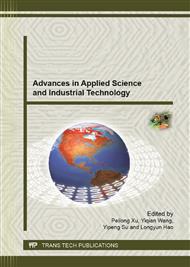p.125
p.130
p.134
p.138
p.143
p.147
p.151
p.157
p.161
Freestanding Ultralong Aligned Carbon Nanotube Films as Electrode Materials for a Lithium-Ion Battery
Abstract:
Freestanding ultralong (900 μm) aligned carbon nanotube (ACNT) films were studied as both an electrode material and a dry adhesive binder with the current collector in lithium ion batteries. Results revealed the formation of a solid electrolyte interface (SEI). The amazingly large initial discharge capacity (1836 mAh g-1) indicated that the ACNT electrode we utilized had great potential for the intercalation of Li ions resulted from extremely large surface area of ACNT films. And electrochemical performances also exhibited excellent cycling stability for this ACNT electrode because of the presence of SEI and the unique structure of the electrode itself.
Info:
Periodical:
Pages:
143-146
Citation:
Online since:
September 2013
Authors:
Price:
Сopyright:
© 2013 Trans Tech Publications Ltd. All Rights Reserved
Share:
Citation:


